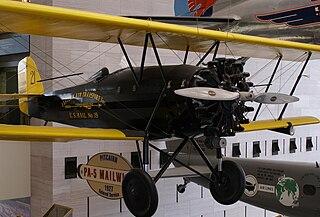Related Research Articles

An autogyro, or gyroplane, is a class of rotorcraft that uses an unpowered rotor in free autorotation to develop lift. While similar to a helicopter rotor in appearance, the autogyro's unpowered rotor disc must have air flowing upward across it to make it rotate.

Juan de la Cierva y Codorníu, 1st Count of la Cierva, was a Spanish civil engineer, pilot and a self-taught aeronautical engineer. His most famous accomplishment was the invention in 1920 of a rotorcraft called Autogiro, a single-rotor type of aircraft that came to be called autogyro in the English language. In 1923, after four years of experimentation, De la Cierva developed the articulated rotor, which resulted in the world's first successful flight of a stable rotary-wing aircraft, with his C.4 prototype.

The Cierva C.30 is an autogyro designed by Juan de la Cierva and built under licence from the Cierva Autogiro Company by A V Roe & Co Ltd (Avro), Lioré-et-Olivier and Focke-Wulf.

A rotorcraft or rotary-wing aircraft is a heavier-than-air aircraft with rotary wings or rotor blades, which generate lift by rotating around a vertical mast. Several rotor blades mounted on a single mast are referred to as a rotor. The International Civil Aviation Organization (ICAO) defines a rotorcraft as "supported in flight by the reactions of the air on one or more rotors".
The McCulloch Aircraft Corporation was the aircraft division of the McCulloch Motors Corporation. McCulloch acquired Helicopter Engineering Research Corp in 1951. It manufactured two innovative helicopter designs – the tandem-rotor MC-4 and the J-2 autogyro.
Aero Resources was established at Gardena, California in 1970 to manufacture Drago Jovanovich's J-2 autogyro. It offered an improved version of the aircraft as the Super J-2, but was unable to obtain enough orders to make production viable.

Aeronáutica Industrial S.A. is a Spanish aeronautical company. The predecessor company, Talleres Loring had been founded by Jorge Loring in 1923.

The Armstrong Siddeley Genet is a five-cylinder, air-cooled, radial engine for aircraft use built in the UK, first run in 1926. It developed 80 hp at 2,200 rpm in its final form and was a popular light aircraft powerplant. Following the company tradition with a slight deviation the engine was named after the Genet, a catlike animal of the same order but different family.

The Cierva C.9 was an experimental autogyro built by Cierva in England in 1927, in association with Avro. It was the first of Cierva's autogyro designs to feature an original, purpose-built fuselage. Two examples were built - a single-seat machine and a two-seater.

The Cierva C.19 was a 1930s British two-seat autogyro, designed by Spanish engineer Juan de la Cierva. It was built by Avro as the Avro Type 620. It proved to be the most successful and widely produced of the early de la Cierva designs.

The Kellett Autogiro Corporation was an American aircraft manufacturer from 1929 based in Philadelphia, named after founder W. Wallace Kellett.
The Pitcairn PA-19 was a four-seat autogyro developed in the United States in the early 1930s. While most of Pitcairn's autogyro designs featured open cockpits in tandem, the PA-19 had a fully enclosed cabin. It also had wings that carried control surfaces. The rotor provided lift only, but could be tilted in flight to trim the aircraft. Four examples were built before the effects of the Great Depression forced Pitcairn to abandon autogyro production in 1934.

The Pitcairn PCA-2 was an autogyro developed in the United States in the early 1930s. It was Harold F. Pitcairn's first autogyro design to be sold in quantity. It had a conventional design for its day – an airplane-like fuselage with two open cockpits in tandem, and an engine mounted tractor-fashion in the nose. The lift by the four-blade main rotor was augmented by stubby, low-set monoplane wings that also carried the control surfaces. The wingtips featured considerable dihedral that acted as winglets for added stability.
The Ekin WHE Airbuggy is a British single-seat autogyro designed and built by the W. H. Ekin (Engineering) Company in Northern Ireland.

The Wallis WA-116 Agile is a British autogyro developed in the early 1960s by former Royal Air Force Wing Commander Ken Wallis. The aircraft was produced in a number of variants, one of which, nicknamed Little Nellie, was flown in the 1967 James Bond film You Only Live Twice. Little Nellie and another sixteen of his autogyros are currently on static display with his second cousin at Wallis & Son Land Rover showrooms in Barton, Cambs.

The Pitcairn Aircraft Company was an American aircraft manufacturer of light utility aircraft. An early proponent of the autogyro, the company, later known as the Autogiro Company of America among other names, remained in business until 1948.

Étienne Dormoy was an aeronautical engineer and a designer of aircraft.
Amax Engineering was an Australian aircraft manufacturer based in Donvale, Victoria, a suburb of Melbourne. When it was in business, the company specialized in the design and manufacture of kit aircraft for amateur construction. The company designed and supplied kits and plans for both fixed-wing aircraft and autogyros.

AutoGyro GmbH is a German aircraft manufacturer based in Hildesheim. The company specializes in the design and manufacture of autogyros in the form of fully assembled, ready to fly aircraft.
References
- Taylor, Michael J. H. (1989). Jane's Encyclopedia of Aviation. London: Studio Editions. p. 915.
- Gunston, Bill (1993). World Encyclopedia of Aircraft Manufacturers. Annapolis: Naval Institute Press. p. 32.
- Popular Rotorcraft Association website